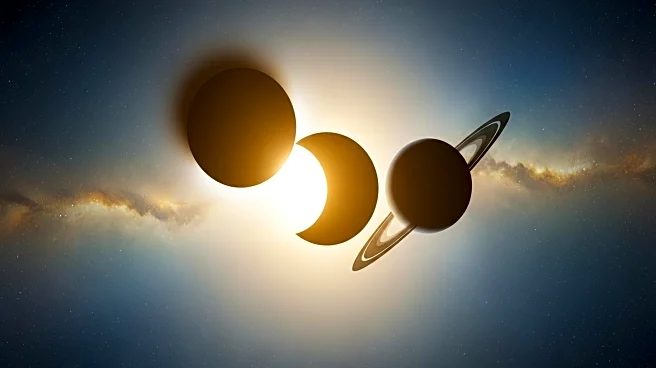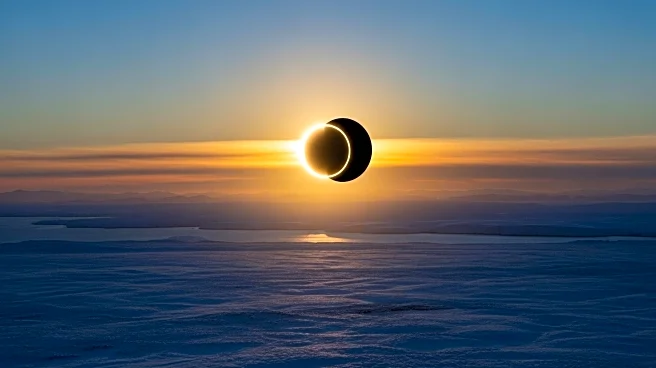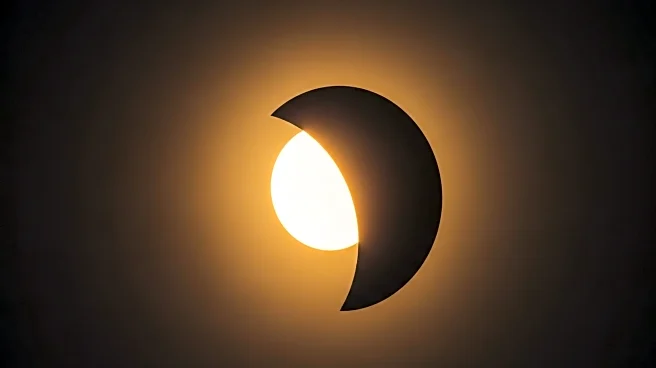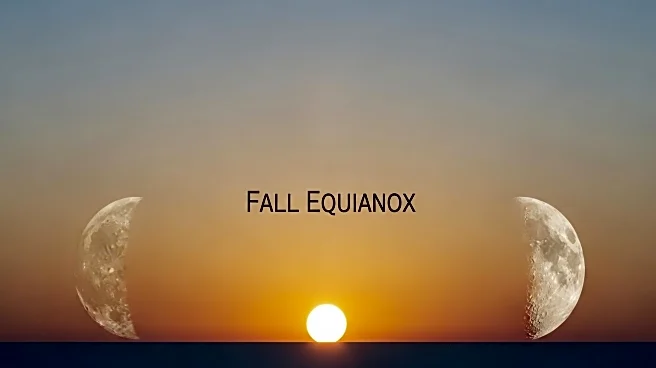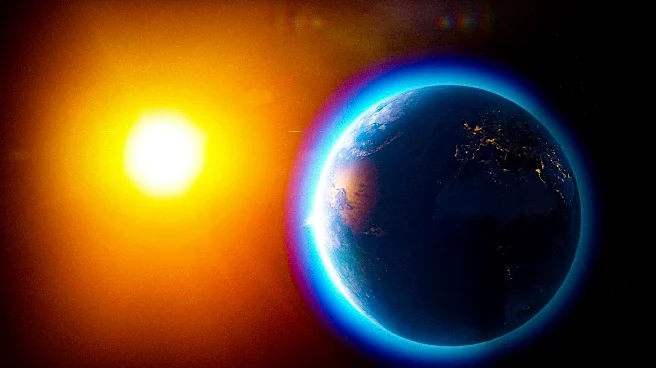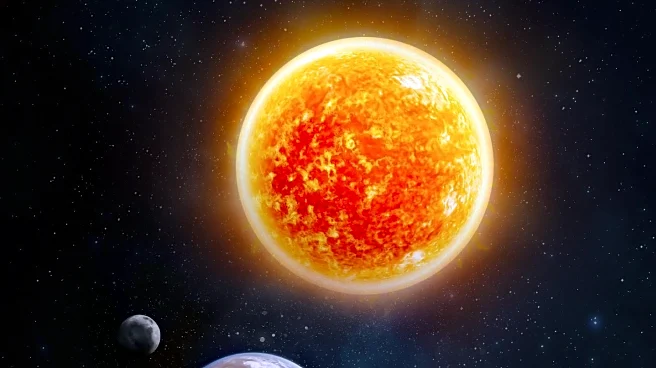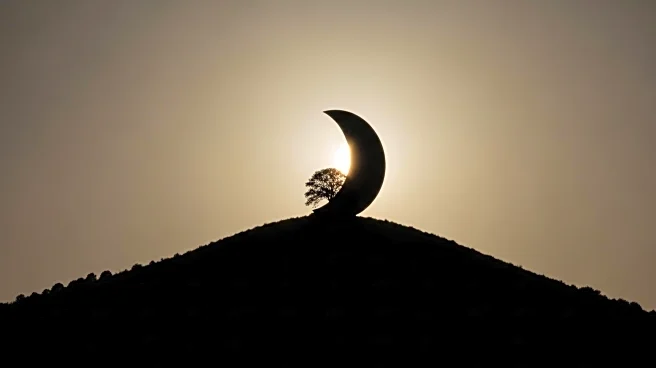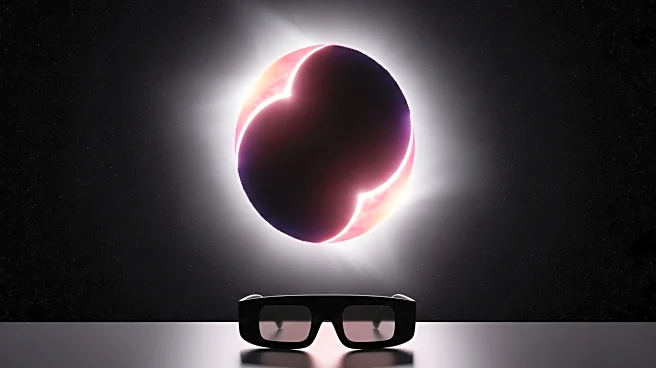What's Happening?
A partial solar eclipse is occurring today, September 21, providing an opportunity for skywatchers to observe the moon as it appears to take a 'bite' out of the sun. The eclipse will begin at 1:29 p.m. EDT and reach its maximum coverage at 3:41 p.m. EDT. Visibility and timing will vary based on location, with significant coverage expected in regions such as New Zealand, Antarctica, and parts of the South Pacific. This event coincides with the September equinox, marking the transition to spring in the Southern Hemisphere and fall in the Northern Hemisphere. Observers are advised to use proper eye protection, such as solar eclipse glasses or solar filters, to safely view the eclipse.
Why It's Important?
The partial solar eclipse is significant as it offers a rare celestial event that can be observed by millions of people across various regions. It provides an educational opportunity for individuals interested in astronomy and the dynamics of celestial bodies. The event also highlights the importance of safe viewing practices, emphasizing the need for protective eyewear to prevent eye damage. Additionally, the timing of the eclipse with the equinox adds a unique aspect to the event, as it symbolizes a change in seasons, which can have cultural and scientific implications.
What's Next?
Following today's partial solar eclipse, the next solar eclipse will be an annular eclipse on February 17, 2026. This 'ring of fire' eclipse will be visible primarily from Antarctica, offering a unique spectacle for those in the region. Future eclipses continue to provide opportunities for scientific study and public engagement with astronomy. Observers and enthusiasts can look forward to these events as moments to deepen their understanding of solar phenomena and the universe.
Beyond the Headlines
The occurrence of solar eclipses often sparks interest in the broader field of astronomy and can lead to increased public engagement with scientific topics. Eclipses can also inspire cultural and artistic expressions, as they have historically been seen as significant events in various cultures. The alignment of celestial bodies during an eclipse can serve as a reminder of the intricate and interconnected nature of the universe, prompting philosophical and existential reflections.

